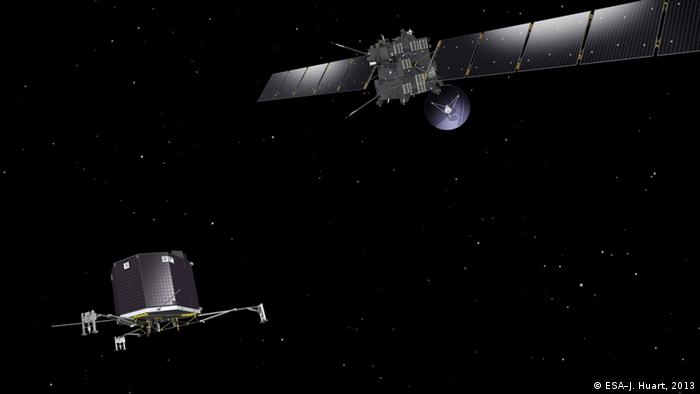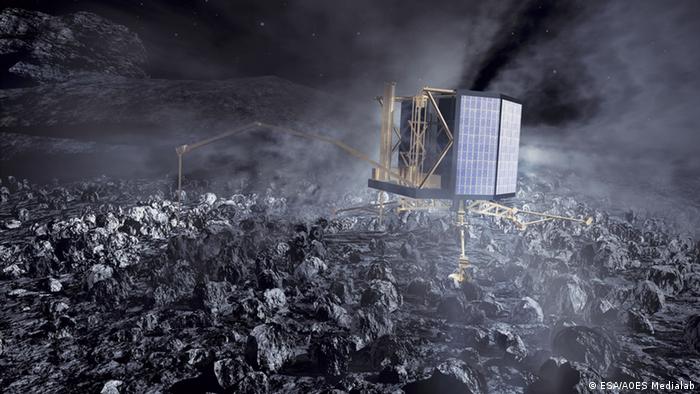After over two years in hibernation, the Philae lander woke up from hibernation to start the next phase of an ambitious mission to land on a comet and potentially look billions of years into the past.
On March 2, 2004, the lander robot Philae and Rosetta space probe were fastened to an Ariane 5 rocket and launched into space to - eventually - study the comet 67P/Tschurjumow-Gerasimenko, the most ambitious mission ever undertaken by the European Space Agency.
On Friday (28.03.2014) the alarm clock went off for the next phase of the mission: approaching the comet. DLR officials said Friday that Philae has successfuly woken up and was transmitting data back to Earth from about 655 million kilometers (407 million miles) away
Before contact with the comet can be made, the Philae lander must undergo a gradual reactivation process. Over the last 30 months Philae and Rosetta went to sleep to save energy. If all goes well, starting in November, Philae will spend four to six months attached to the comet studying its material composition. Rosetta was successfully woken up in January.
Before contact with the comet can be made, the Philae lander must undergo a gradual reactivation process. Over the last 30 months Philae and Rosetta went to sleep to save energy. If all goes well, starting in November, Philae will spend four to six months attached to the comet studying its material composition. Rosetta was successfully woken up in January.
A search for the origins of life
Comets act like time capsules for the solar system - they can preserve organic matter for billions of years by keeping it frozen solid. Substances researchers hope to find in the comet, such as amino acids, could provide clues to the origin of life on Earth some 4.6 billion years ago.
"The comets are very old components of our solar system. By studying them, we try to understand how our solar system came to be," said Johann-Dietrich Wörner, chair of the executive board at theGerman Aerospace Center.
Over the course of Philae's time on the comet, researchers hope to find out whether the water on Earth could have been brought here by comets. "It really is a journey into the unknown," Wörner said. Rosetta, which will navigate around the comet before dropping Philae to its surface, are equipped with cameras capable of mapping the comet to a decimeter degree of accuracy.
Making contact without gravity
History's few instances of space landings makes Philae's mission to the comet's surface worthy of attention, but to call Philae's rendezvous with the comet a "landing" isn't entirely accurate. Given the comet has a diameter of only five kilometers at its widest point, its mass is not large enough to generate a gravitational pull strong enough to support a landing. A more accurate description of the event is a docking.
The docking process is no small feat. Rosetta will bring the Philae lander within three kilometers of the comet, which travels through space at speeds up to 135,000 kilometers per hour. Philae will then fire a harpoon into the comet's outer layer of ice then reel itself in.
"It is a difficult mission," said Wörner. "But I trust my technicians and scientists. They've had success harpooning various materials."
The harpooning is the first of a number of tricky maneuvers. If the harpoon holds fast and Philae can reel itself onto the comet's surface, screws will then extend from the feet of the lander into the ice. Measurement instruments on the lander will then analyze the comet's make-up.
"We only have a rough idea about the comet's density based on its mass and trajectory," Wöner said, adding that a spectrometer will identify what the lander finds. "We don't really know what it is made of. That's what we want to find out."







0 Comment:
Posting Komentar